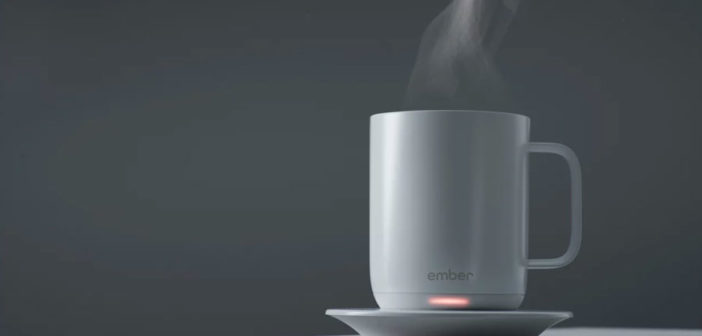The Ammunition-designed mug lets you choose the exact temperature you’d like your coffee to remain for up to eight hours.
It’s a chilly Sunday morning. You pour yourself a cup of tea, curl up in a cozy blanket, grab a book, read a few pages, and take a sip only to find that it’s gone cold. This letdown is precisely why Ember–an L.A.-based startup that makes temperature-controlled products–designed its latest offering: the Ember Ceramic mug.
The smart mug, which was designed by Ammunition, connects to your phone through Bluetooth and allows you to set an ideal temperature for whatever you’re drinking (up to 145 degrees Fahrenheit). Once the beverage reaches that temperature, the mug will maintain it. (After two hours of sitting idle, the cup automatically goes into sleep mode as a safety measure, but if you keep moving it, it’ll keep the drink warm.) On the outside it looks just like a regular cup, but beneath its unbreakable double-walled stainless steel and ceramic exterior, there’s complex tech making this seemingly simple feature work. Four sensors embedded inside relay temperature info to a microprocessor in the cup’s base, which tells the heating element to crank it up or dial it back. To recharge the cup–which is hand-wash only, obviously–simply rest it atop the included conductive coaster.
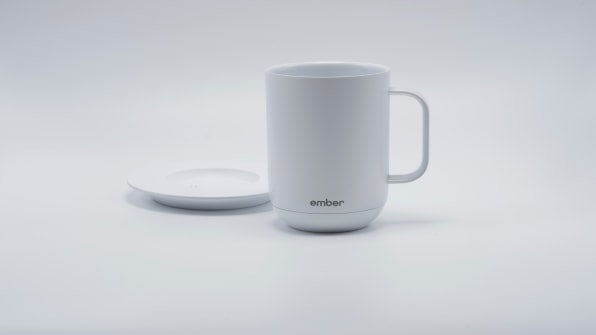
Two yeas ago, Ember launched its first product: a matte-black temperature-controlled travel mug also designed by Ammunition that let users both heat and cool their drinks to the right temperature. While its features and aesthetic were aimed squarely at the gadget-obsessed tech set, Ember’s new design is more sophisticated and looks just like a classic white mug you might find at Crate & Barrel or Williams Sonoma and that your lawyer friend, designerati acquaintance, or grandma might buy. This is all part of Ember’s strategy to mainstream temperature-controlled products.“It’s the Tesla business model,” Clay Alexander, CEO of Ember, says. “We launched with a premium product. [The travel mug] had a digital screen and phase-change cooling–it’s space technology in your hand. At $150 it had amazing sales, but it hit a ceiling.”
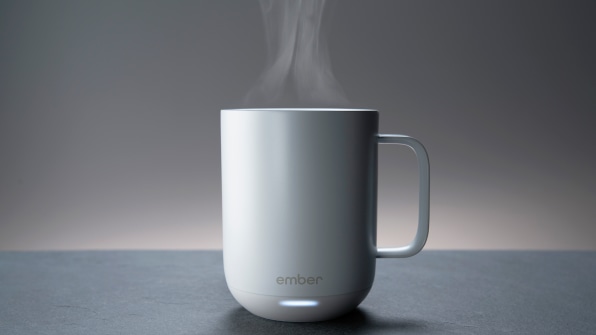
The ceramic mug will retail for $79 and is available exclusively at Starbucks and on Ember’s website. Alexander sees potential for it to be used in corporate settings, every day at home, or in any circumstance where you’d reach for a regular mug. The original travel mug was successful–it sold out at Starbucks, was featured on the Ellen show, and is on track to earn revenue in the “eight-digits” this year according to Ember. Alexander expects this next product to be even more popular, forecasting units sold in the hundreds of thousands within its first year.In the future, Alexander wants to make temperature-controlled plates, glassware marketed to mixologists and cocktail drinkers, and serving ware. He and Ammunition are currently developing a baby bottle, which they expect to be the next product Ember brings to market. The key to making this successful is to augment existing product archetypes and add technology to them without letting that technology take anything away from the original experience.
For example, Ammunition and Ember went to great lengths to make sure the edge of the cup felt exactly the same as a regular ceramic mug. The size had to be the same, as did the weight–even the sound the mug makes when you set it on a table. The cup’s base is actually plastic–to let the Bluetooth signal reach your phone–and has the same texture as the rest of the cup. When industrial designer Martin Gschwandtl received the first prototypes he noticed that it sounded like a plastic sippy cup hitting a table. To “correct” the sound, he added a rubber ring at the base, which also prevents the cup from scratching tables and offers a recess for the metal conductors on the cup’s bottom.
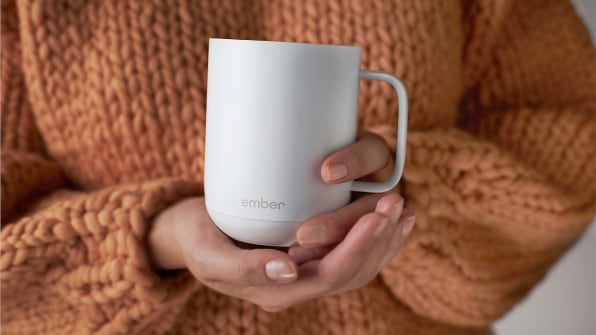
Ember and Ammunition believe that obsessing over these small details will lead to more fans, and to what the companies are ultimately trying to do: improve day-to-day activities through technology. So while some smart mugs have come to market promising to monitor health and track calories consumed and tell you what you’re drinking, Ember isn’t about adding extras. It’s about using design to meet your expectations. In this case, that means a cup of coffee or tea or a hot toddy that would earn Goldilocks’ just-right seal of approval.
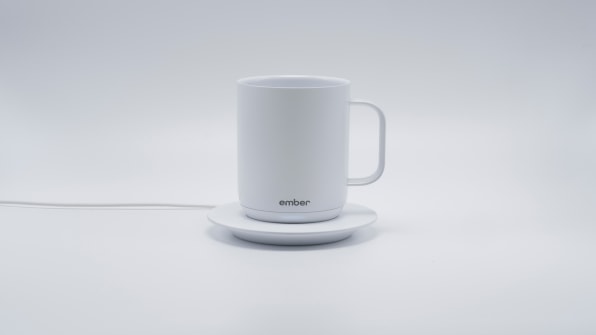
I tested the cup for a few days–and it performed just as promised. Setup was easy: download an app, turn on the cup, and pair the device. If you’d like, you can also customize the color of the LED light that shines when the cup is on. I don’t typically know what temperature my drinks are, so I wasn’t sure what temperature to set for my first cup of tea. The hot water came out of my office’s dispenser at a steamy 165 degrees, which I learned when I looked at Ember’s app. To set the cup’s temperature, you slide a ruler-like icon on the screen until you get to the temperature you want. I picked 145, the maximum temperature. Since the ceramic mug is open–unlike the travel mug, which has a lid–and the liquid is exposed to the air, there’s no cooling feature. It took a couple of minutes for the tea to cool down, but 30 minutes later, my tea was still a sweaty 145 degrees. I tried it again the next day with coffee–dialed down a few degrees–and it stayed nice and toasty.One morning, I poured my coffee into a regular cup at my apartment and started catching up on emails. After I got through that day’s inbox, I took a sip and discovered that my coffee had gone cold. What surprised me most about Ember’s ceramic mug was that I missed it when I didn’t have it. I wanted my dumb old mug to be smart–and I don’t consider myself a gadget person.
“We see many many companies trying to introduce technology into everyday products to be disruptive,” Matt Rolandson, a partner at Ammunition, says. “For our part, we have a rule that we’re stubborn about. When it comes to adding tech to everyday life, we don’t want to do stuff that will make things difficult or more frustrating. If it doesn’t amplify–and maybe augment–what you already expect in that moment, it’s probably bad idea.”
–
This article first appeared in www.fastcodesign.com
Seeking to build and grow your brand using the force of consumer insight, strategic foresight, creative disruption and technology prowess? Talk to us at +9714 3867728 or mail: info@groupisd.com or visit www.groupisd.com

